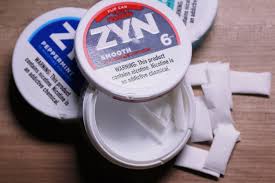
In a lab grown solitaire diamond ring, cutting-edge science and classic elegance are blended. This beautiful stone on a band is a substantial investment, and it often has sentimental importance. To keep its beautiful shine and strong structure, it needs meticulous care. Lab-grown diamonds are just as strong as mined diamonds because of their physical, chemical, and optical properties. However, the setting and diamond must be kept clean and safe to keep them from getting dull, damaged, or lost. Your lab grown solitaire diamond ring will remain as stunning as the day you first put it on if you follow these simple but effective instructions.
Cleaning Often Brings Back the Luster
One of the best methods to keep your lab grown solitaire diamond ring looking good is to clean your home frequently. Lotions, soaps, oils, grime, and even dust that gets into the air can build up under the diamond and on the metal setting, making it less shiny. It should be simple to clean your lab grown solitaire diamond ring. The safest and easiest way is to use warm water and a mild, non-abrasive soap like dish soap. Don’t use moisturizers or harsh chemicals. Put your ring in a small basin of warm water with a few drops of soap and let it soak for 20 to 40 minutes. This makes dirt less sticky. After soaking, use a soft-bristled toothbrush or jewelry brush to clean the diamond and setting gently, paying special attention to the back where light comes in. Use warm, clean water to rinse and a soft, lint-free cloth to dry. Don’t use paper towels, which can scratch metal. Every week or when it starts to lose its shine, your lab grown solitaire diamond ring needs to be cleaned.
Protecting Your Precious Stone from Damage
Damage prevention is just as important as cleaning when caring for a lab grown solitaire diamond ring. Even though diamonds are the hardest natural material, they can break. A hard strike to the diamond’s girdle (the widest part) could break or crack it. The metal setting of a solitaire diamond often bends or scrapes. To keep your ring safe, take it off before doing anything dangerous. Some examples are swimming (chlorine can damage metal settings and cold water can shrink fingers, which can lead to loss), weightlifting, exercising, and doing manual work. Putting on lotions, sunscreens, or hairsprays while wearing your ring could make it dull and build up. In order to keep your lab grown solitaire diamond ring in good condition and avoid accidentally damaging the stone or setting, you should remove it before performing these tasks.
Smart Solutions for Safe Storage
Your lab grown solitaire diamond ring requires specific care when it is not being worn. If you don’t store your metal bands properly, they can get scratched, get tangled with other jewelry, or be in dangerous places. The place where you store things should be clean, dry, and not too hot or sunny. A jewelry box with fabric lining and separate sections or slots can keep your ring safe from other valuables. If you don’t have a jewelry box, a small, clean container lined with felt or soft fabric or a soft cloth pouch will work. You should never put your lab grown solitaire diamond ring in a drawer or on a hard surface where it could fall. Putting your ring in a safe place, like next to your bed or on your vanity, makes it easier to remember to put it back on when you take it off. This lowers the risk of losing or damaging it.
Cleaning and Inspections by Professionals
Regular maintenance, which includes home cleaning, is just as important for your lab grown solitaire diamond ring as professional treatment. Jewelers’ tools and solutions can get to hard-to-reach places, which means they can clean deeper. Also, professional jewelers can look at your ring setting very closely. Wear and tear or small bumps that you might not remember might cause prongs, bezels, and other setting parts to come free.











